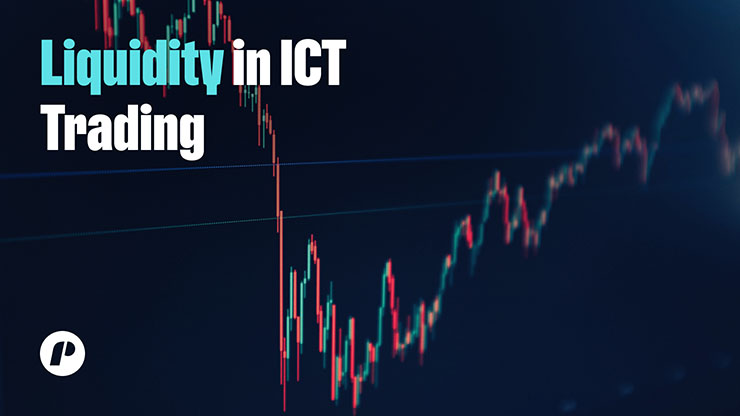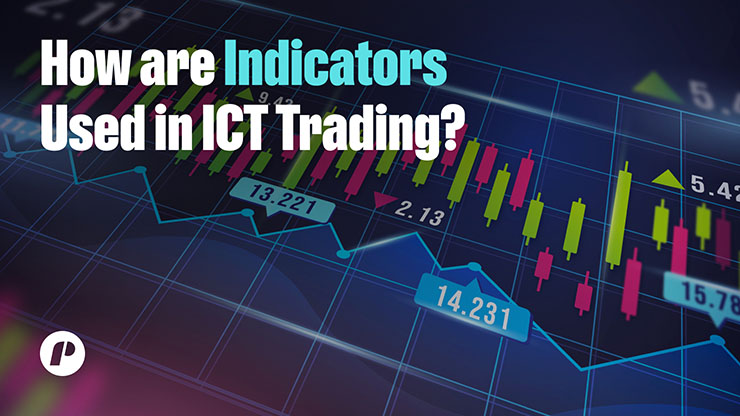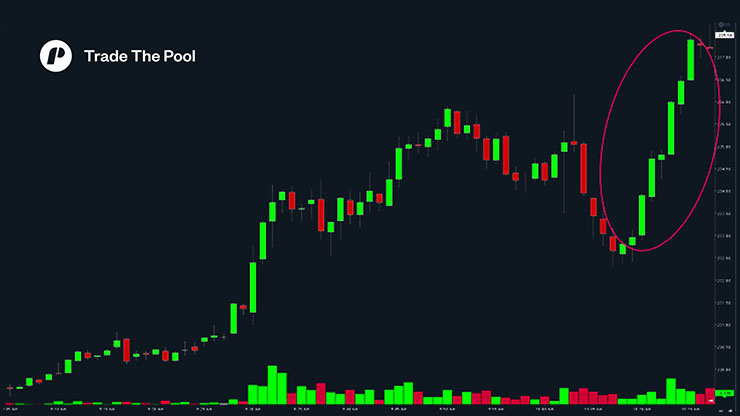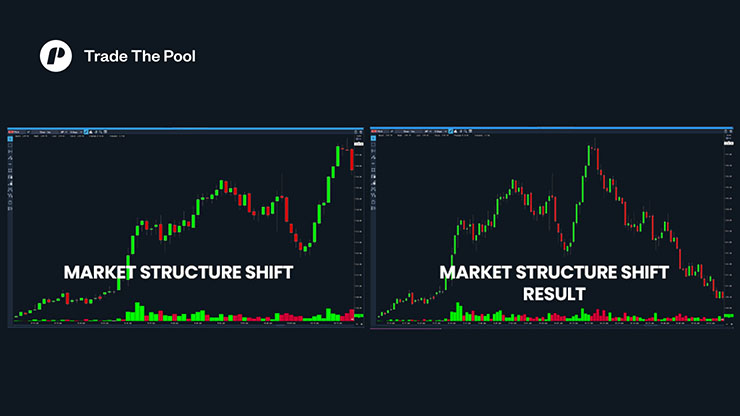Empty promises and smoke and mirrors. A lot of traders in the confusing world of financial markets are on a tough search for a way to trade that really works. There are many ideas out there, and ICT has become a popular, though sometimes debated, one. If you’ve ever felt like the “smart money” is always after your stop losses, you’re not alone, and ICT concepts are what many traders are looking at. So, what’s ICT trading? It’s a specific, all-around way of trading created by Michael J. Huddleston, known as “The Inner Circle Trader.”It looks at how big institutions trade and focuses closely on price action.
The main goal? Finding trades with a high chance of winning by checking out how money moves in the market (liquidity), the market’s structure, and the usual patterns of how big players trade and sometimes even manipulate things. It doesn’t rely on typical indicators that follow trends or momentum (unless they come right from the price itself).
Key Notes
-
- Understanding the Core ICT Concepts
- What does ICT stand for?
- What’s in ICT?
- What is ICT vs retail trading?
- What is Liquidity in ICT Trading?
- ICT Optimal Trade Entry
- How are Indicators Used in ICT Trading?
- What is the best time frame for ICT trading?
Understanding the Core ICT Concepts
ICT trading concepts are all about understanding what the “smart money” institutions are planning by really looking closely at how prices move. These big players trade huge amounts, so they often need to nudge prices around to get enough orders filled.
To get a better handle on this and trade in line with them, ICT uses a set of key ideas. It looks at the market’s structure to see the overall picture, finds key spots where institutions likely placed orders (ICT concepts like order blocks), checks out areas where price moved quickly without much trading in between (ICT concepts such as fair value gap), and tries to figure out where prices might be heading. By getting good at these things, traders can better understand what the institutions are doing and hopefully make smarter trades using ICT concepts.
What does ICT stand for?—Exploring the Foundation of ICT Concepts
So, ICT? It’s just short for Inner Circle Trader. Sounds kind of cool, right? Michael J. Huddleston came up with it to show that his way of seeing the market is like having an “insider’s” view. The “Inner Circle” idea suggests you get to see what the big institutions are doing behind the scenes, which goes beyond what most regular traders know. Huddleston picked this name because he wanted to teach people to see the market the way the big guys do, focusing on core ICT concepts.
He figured that if you learn the ICT principles, you can really understand what makes prices move. And yeah, “ICT trading” has pretty much become the common term for this style – the one that’s super precise, figures out what the “smart money” is up to, and aims for those high-probability trades based on that insider info, all thanks to understanding ICT concepts. So, if you hear “ICT” in trading, it’s almost always about Michael J. Huddleston’s Inner Circle Trader method and its underlying ICT concepts.
What’s in ICT?
Alright, so what’s actually in the ICT toolbox? It’s a mix of connected ideas, tools, and tricks to help you really understand the market. One big focus is market structure – knowing the main highs and lows and where the market might be going. Then there are liquidity pools, which are like areas where a lot of stop losses or take profits are sitting, and big institutions often target these to fill their orders. Order blocks are key too; they’re price areas where big players likely put in orders and can act as future support or resistance. Fair Value Gaps (FVG) are like price imbalances that often get filled later.
ICT also uses Optimal Trade Entry (OTE), a way to find good entry points after a price pullback using Fibonacci levels. Plus, there are kill zones, specific times of day with more trading action. ICT sometimes uses indicators like the RSI in specific ways. It also looks at how different trading sessions (Asia, London, New York) can affect price. These ideas all fit together to give you a detailed way to look at the market like an institution.
What is ICT vs retail trading?
Okay, so the ICT way of trading is pretty different from regular retail trading. Here’s the lowdown:
- How They See the Market: Retailers often use indicators and simple chart patterns, thinking the market has predictable rules. ICT tries to see what big institutions (“smart money”) are doing, focusing on price, market structure, and where the money (liquidity) is.
- What Tools Do They Use? Retail often uses lots of indicators as signals. ICT looks mostly at price action, understanding market mechanics without many indicators.
- Which Charts They Look At: Retail might stick to one timeframe. ICT looks at different timeframes to see the big picture and then zooms in for entries.
- What They Think Drives the Market: Retail might think it’s just supply and demand or indicator signals. ICT believes big moves happen when institutions need to trade large amounts, sometimes even causing smaller moves to trick others or get liquidity.
- What Ideas are Important to Them: Retail talks about support, resistance, and trends. ICT focuses on market structure shifts, order blocks, fair value gaps, liquidity, kill zones, and market maker patterns.

What is Liquidity in ICT Trading? A Core ICT Concept
Alright, in ICT, liquidity is about those spots where a ton of buy or sell orders are waiting at certain price levels. These orders can be stop losses, take profits, or pending orders. It’s a big deal because institutions trade huge amounts and need these orders to fill their own without big price changes. They often look for areas with lots of liquidity. The ICT folks also think institutions might push prices towards stop losses to trigger them, getting the liquidity they need. ICT traders try to figure out where this liquidity is, often near highs and lows, as that can hint at where the price might go next.
Understanding ICT Optimal Trade Entry
Let’s break down OTE. It’s a really precise ICT way to find good spots to enter a trade after the price has made a big move and then pulls back. Think of it as a “sweet spot” using Fibonacci levels, usually between 62% and 79% of that initial move. This area is “optimal” because big players might add to their positions here after shaking out some traders. Just being in the OTE zone isn’t enough, though. ICT traders look for other clues (confluence) like price reacting to an order block or a fair value gap. When price enters this zone and looks like it’s going to continue in the original direction, that’s when you might enter. OTE helps you get into trades at a good price, which can mean better risk and reward. It’s a key part of many ICT strategies for high-probability setups.
What is an ICT optimal trade entry?
ICT optimal trade entry is just the full name for the ICT OTE strategy. It’s about using Fibonacci levels to find the best places to enter a trade after a price pullback.
What is the ICT OTE strategy?
The ICT OTE strategy is simply using the Optimal Trade Entry technique. OTE stands for Optimal Trade Entry, and it means finding that 62% to 79% Fibonacci zone and looking for other signs to enter a high-probability trade.

How are Indicators Used in ICT Trading?
When you get into ICT trading, you’ll see that the main thing is understanding price action and what the big institutions are doing. So, unlike other methods with lots of indicators, ICT usually keeps it simple. Indicators aren’t the main focus, but they can help confirm things if used correctly. For example, the Relative Strength Index (RSI) might be used to spot divergences when the price is at a key ICT level. You won’t find a special set of “ICT indicators.” Instead, ICT teaches you how to use common ones, like the RSI, in a way that fits with their ideas about price, market structure, and institutional trading.
What is the role of indicators in ICT Concepts?
In ICT, indicators are mostly used as a second check to confirm trading ideas you get from looking at price action, market structure, and liquidity. They’re not the main reason you’d take a trade, but they can add confidence to your analysis.
How does ICT view common indicators like RSI?
ICT often uses common trading indicators like the RSI differently than usual. Instead of just looking at overbought or oversold levels, ICT traders might look for things like divergences or if the RSI fails to break certain levels, especially when the price is at an important ICT spot.
Are there specific ICT indicators?
Nope, there aren’t really any indicators labeled just for ICT. Instead, the ICT method teaches you how to use regular indicators in a way that makes sense with their core ideas about how the market works. The main focus is always on understanding price and what the big institutions are doing.
What is the best time frame for ICT trading? Applying ICT Concepts
Experienced traders know the market looks different depending on whether you’re looking at the long-term or short-term. In ICT, they don’t say there’s one “best” timeframe. It’s more about looking at the market from different angles to get the full picture. The key is that the main ideas of how the market’s put together, where the big money is (liquidity), and what the institutions are doing seem to happen on any timeframe. So, the “best” one for you just depends on how you like to trade, what you’re trying to achieve, and how much time you have.
Getting the Big Picture: Market Bias and Key Levels (Daily, Weekly, Monthly)
Think of these as your main maps. ICT traders often start here to see where the market’s generally heading. They look for important highs and lows that big institutions are probably watching, along with key areas like major order blocks (where big orders were likely placed) and longer-term fair value gaps practice (spots price might revisit). This gives you the background info for your trades, showing you possible support, resistance, or targets.
Zooming In: Refining Structure and Finding Sweet Spots (4-Hour, 2-Hour, 1-Hour)
When you look at these timeframes, you see more details in the market’s moves. You can spot clearer signs of direction changes or breakthroughs in important levels. ICT traders often use these to find “sweet spots” – like smaller order blocks or fair value gaps that line up with what you saw on the bigger charts. These can be good places to start thinking about a trade.
Getting Down to the Nitty-Gritty: Timing Your Entries (15-Minute, 5-Minute, 1-Minute)
These are for getting your timing just right. Once you’ve found a potential area on the higher charts, you can zoom in here to find the best moment to get in. ICT traders might watch for specific price patterns or quick changes during the busiest trading times (killzones). If you like fast trading, like scalping, you’ll be on these charts more.
Putting It All Together: Your Style and the Market’s Rhythm
ICT also considers the time of day, especially those busy kill zones. But really, the timeframes you use most will depend on your trading style – whether you hold trades for minutes, hours, or days. The cool thing about ICT is that you can use its ideas for any of these. Just remember to start with the big picture and then narrow it down to find your entry.

Understanding Displacement in ICT Trading
Displacement in ICT trading is when the price makes a strong, sudden move up or down. On a chart, this often looks like a bunch of long candles in a row, all going the same way with small wicks. ICT notes that there are two primary aspects of displacement: it typically signifies a significant increase in buying or selling, often when the price reaches a key liquidity point, and it almost always results in a Market Structure Shift and a Fair Value Gap.

Understanding Market Structure Shift in ICT Trading: An ICT Concept
A “Market Structure Shift” (MSS) in ICT occurs when the current trend is disrupted. If it’s been going up (bullish), it’s when you see the lowest point of a lower low after a series of higher highs and higher lows. If it’s been going down (bearish), it’s the highest point of a higher high after lower lows and lower highs. ICT traders view an MSS as an early indication that the trend may be shifting, and if other factors confirm it, they often use this spot on the chart as a starting point for their trades.
Understanding Inducement in ICT Trading: Applying ICT Concepts
Inducements are price moves at the edges of small countertrends within a bigger trend. ICT traders believe these happen because “Smart Money” is hunting for stop-losses on the lower timeframes. The idea is that once the price reaches these inducement levels and captures that extra liquidity, it’ll turn around again and continue with the primary trend. ICT traders often plan their trades based on the belief that, after an inducement, the price will move in the direction of the long-term trend.
Understanding Inducement in ICT Trading: Applying ICT Concepts
When a key liquidity level breaks and the trend shifts, then you’ll often notice what appears as a “gap” on your trading charts. ICT traders call this a Fair Value Gap (FVG). Specifically, it typically shows up as three consecutive candles. The middle candle is usually longer, and importantly, there are gaps between its wicks and the wicks of the candles on either side. Because of this, these Fair Value Gaps have a tendency to be filled in later. Consequently, ICT traders frequently use this idea when planning their trades.
Understanding Balanced Price Range in ICT Trading
A Balanced Price Range (BPR) in ICT trading happens when you have two opposite Displacements close together, creating two Fair Value Gaps. When the price is in a BPR, it often moves back and forth, testing the highs and lows as it tries to fill both Fair Value Gaps. ICT traders try to trade within this up-and-down movement and also believe that once the price breaks out of the BPR, it’s likely to continue with the original trend.
Summary and Takeaways of ICT Concepts
The financial markets often confuse traders. They are constantly looking for a clear and logical approach. ICT, or Inner Circle Trader, was created by Michael Huddleston. It’s a comprehensive trading program. This program helps traders understand the market. It does so by examining the actions of large institutions, also known as “Smart Money.” Instead of relying solely on typical indicators, ICT emphasizes price action itself. It also focuses on market structure and a crucial concept: liquidity. Liquidity refers to the abundance of buy and sell orders.
The core concept is that large institutions often make slight market manipulations. They do this to fill the buy and sell orders required for their substantial trades. Consequently, ICT aims to teach traders how to spot these maneuvers. It also focuses on how to trade alongside the “Smart Money.” This learning process includes understanding concepts like order blocks and fair value gaps. Furthermore, it involves using Optimal Trade Entry (OTE). OTE helps in identifying good entry points for trades.
ICT doesn’t primarily focus on indicators. However, it does provide specific methods for using standard tools like the RSI. This allows you to double-check your observations. A key element of ICT is analyzing the market across multiple time frames. This process begins with the broader view. Then, traders zoom in to pinpoint the best entry point for a trade. ICT intends to give traders an “insider’s” perspective. This helps them move beyond typical retail trading strategies. By understanding the forces that drive the market, they can discover more consistent ways to make profitable trades.














